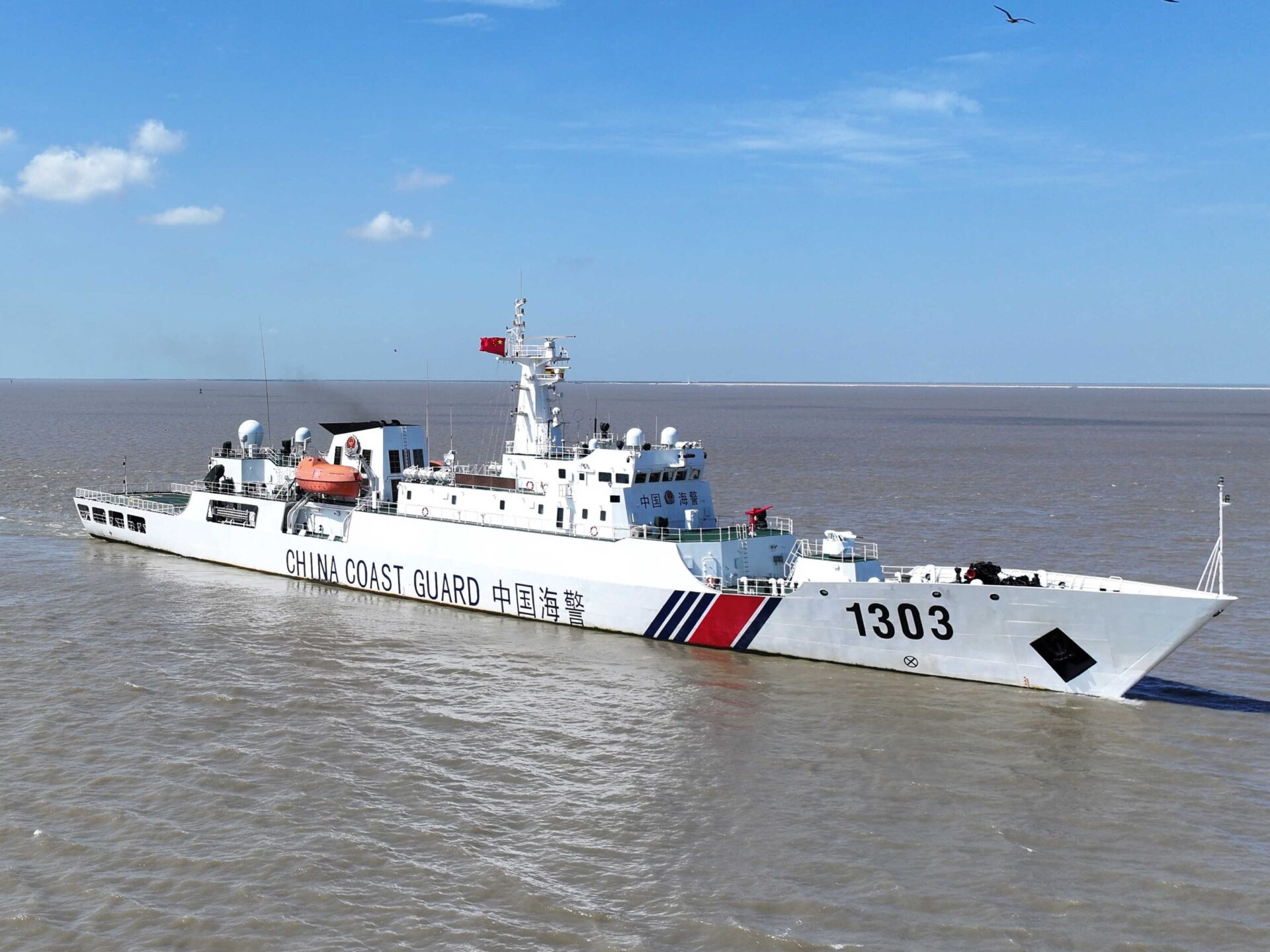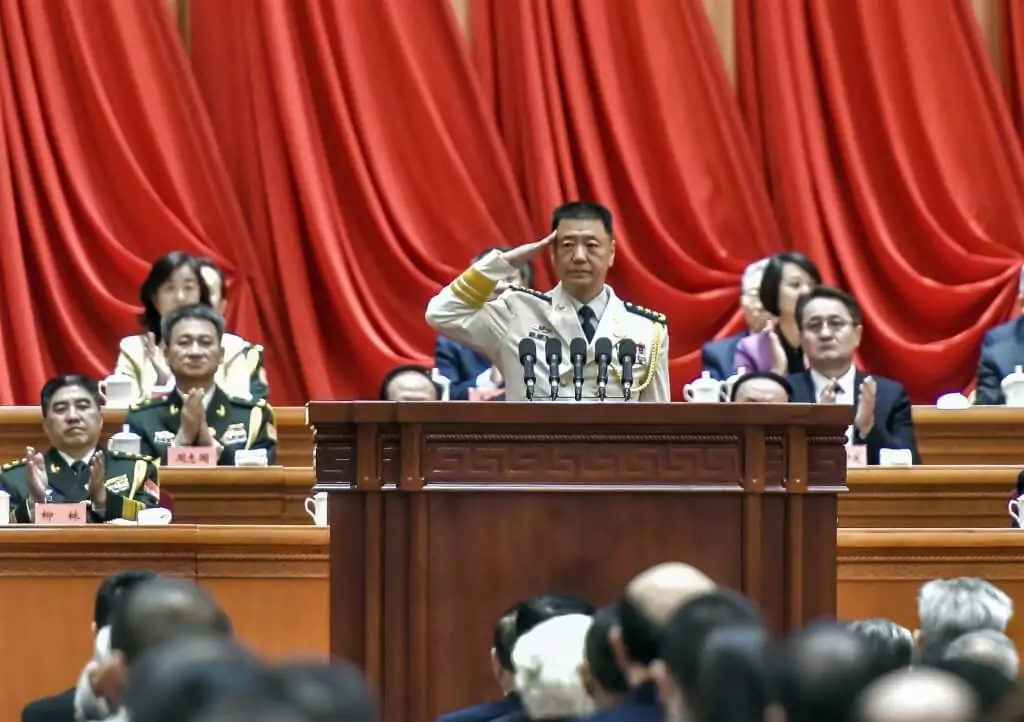
New Documentary Promotes PLA Development
Executive Summary:
- A new documentary on the People’s Liberation Army (PLA), Gongjian, presents an array of military hardware while showcasing operational competence.
- Highlighting the latest Fujian-class aircraft carrier and recent nuclear missiles tests while underscoring Party loyalty and spirit of sacrifice, the documentary signals to domestic and international audiences the country’s military capacity and political resolve to advance its strategic objectives.
- The documentary is a tool of cognitive warfare. While useful for tracking material developments and gaining insight into PLA priorities, it avoids reference to precise metrics that might help gauge readiness.
On August 1, the anniversary of the founding of the People’s Liberation Army (PLA), the Central Military Commission’s (CMC) Political Work Department released its latest documentary. Titled “Forging Ahead: Resolutely Building a World-Class Military” (攻坚——矢志强军向一流; hereafter, Gongjian), the documentary has garnered 6.1 billion cumulative views in terms of “cross-media reach,” according to a Ministry of National Defense (MND) spokesperson (MND, August 15).
Created to promote “Xi Jinping Thought on Strengthening the Military,” Gongjian selectively highlights elite PLA units and milestone breakthroughs, and pushes two key messages: first, that the country is progressing smoothly toward the PLA’s Centennial; second, that the PLA can and will secure the interests of the CCP and Chinese people.
Key Themes
Political slogans and combat doctrine
Episode One’s refrain, “orders are as immovable as a mountain” (“军令如山”), anchors the series’ narrative around meeting the PLA’s 2027 Centennial Military Building Goal (建军一百年奋斗目标) (China Brief, September 25). Across episodes, the Xi-era triad “be able to fight, dare to fight, fight to win” (能打仗、敢打仗、打胜仗; 随时能战) appears frequently. This slogan stresses obedience, endurance, and multi-domain integration (People’s Daily Online, August 6, 2015). The finale closes on Xi’s statement to “Bear the heavy and honorable burden, remain confident of victory, and overcome all obstacles” (担起 … 光荣 … 沉甸甸 … 的担子 … 坚定必胜信心,排除万难去争取胜利), an allusion to a Mao Zedong quote delivered at the 7th Party Congress that is framed as a watershed meeting shaping Party history and the Sino-Japanese War (CCP News; China Military Online, January 4).
ICBM Sea Test and Land-Based Launches
Gongjian’s first episode also references a publicly acknowledged intercontinental ballistic missile (ICBM) test launch that landed in the western Pacific in 2024. The launch was protested by Japan and Pacific states for lack of prior warning (Asia-Pacific Leadership Network, November 18, 2024). Further details remain unconfirmed, such as the missile type, payload, and impact point (NHK; Ministry of National Defense, September 25, 2024; ASPI, October 15, 2024). [1] The episode also shows a PLA Rocket Force (PLARF) brigade and a land-based launch exercise, in a clear attempt to signal resilience despite recent purges and reorganization.
The Fujian Displays Electromagnetic Aircraft Launch System
The Fujian aircraft carrier (CV-18) is the focus of Episode 4. The PLA’s third indigenously designed carrier, the Fujianwas first launched in 2022, ten years after the commissioning of its first, the Liaoning (CV-16), in 2012. That year, the Report to the 18th Party Congress called for the People’s Republic of China (PRC) to become a “strong maritime power” (海洋强国) (Xinhua News, November 10, 2012; People’s Daily, June 17, 2022). As seen in Gongjian, the shipbuilding industry and research and development for its aircraft have been key targets for achieving this goal.
While there is no set date for the Fujian to enter service, the documentary says that it is currently in the “final phase” (进入最后的攻坚时刻); but the platform is clearly more advanced than its two predecessors. Unlike the Liaoning and the Shandong, the Fujian has an electromagnetic catapult-assisted take-off system, footage of which is on display in Gongjian (CCTV-7, August 4). On September 22, the PLA released images of the Fujian launching and recovering three aircraft using this system, something that likely took place during sea trials this summer (China Brief, July 31; Xinhua, September 22). Once operational, the Fujian could field aircraft across the Western Pacific (Xinhua News, May 25).
Signals in practice (readiness and deterrence)
Gongjian also includes vignettes of training, exercises, and confrontation to signal escalation competence. For instance, maritime confrontation with the Philippines at the Second Thomas Shoal (仁爱礁) appears in the second episode, and the same episode also features the PLA Air Force’s successful expulsion of an “enemy helicopter” (驱离外机) in the East China Sea, and the fifth episode highlight the first dual-carrier operation beyond the Second Island Chain (China Brief Notes, July 31).
These scenes foreground contested theaters, such as Taiwan, the East China Sea, the South China Sea, and the Western Pacific. Displaying joint C2ISR capabilities, [2] they put forward a consistent message of deterrence: maintain high readiness, move first tactically if needed, and sustain the system under pressure, while leaving hard performance unstated.
Signal: Joint readiness in priority theaters and the doctrine behind it
Episode Three, “Joint Task for Victory” (合力制胜), highlights the PLA’s emphasis on inter-system confrontation (“未来的作战是体系的对抗”) as the decisive feature of future warfare. It walks through Eastern Theater Command’s Joint Sword-B (联合利剑-B) drills around Taiwan, framed as anti-access/area-denial (联合海域封控) training. The PLA has used military exercises as a deception tactic in the past, and Taiwanese and U.S. analysts have argued that the PLA could shift “from exercise to combat” (由演轉戰) when required (INDSR, September 6, 2023; China Brief, November 1, 2024; U.S. Naval War College, September 23). [3] The episode sequences air–sea information integration, featuring coordination on the C2ISR “kill chain” (杀伤链) and “information chain” (信息链) between the PLA National Defense University and the Information Support Force (信息支援部队) (CCTV-7, August 4).
Series Emphasizes Readiness and Party Control
Through pairing operational footage with demonstrations of modern military hardware, Gongjian broadcasts the PLA’s capabilities and competence. This emphasis on readiness and seizing the initiative is hardwired into PLA doctrine, and is evident in historical behavior, such as the 1962 Sino-Indian War, the 1969 Sino-Soviet clashes, the 1979 Sino-Vietnam War, and three Taiwan Strait crises (National Defense University Press, 2022). It is also apparent in the show’s teaser line: “Every post and position echo with the determination of Chinese soldiers pressing the attack” (每一个岗位战位,都响彻着中国军人攻坚的声音).
Gongjian repeatedly ties combat spirit to Party control. The line “do whatever the Party orders” (党叫干什么就干什么) frames elite-unit vignettes as proof of Party-Military cohesion. Specifically, the first and final episodes revisit the Battle of Triangle Hill (三角高地戰役) during the Korean War, which saw thousands of deaths across 42 days of protracted engagement. Despite superior casualties on the Chinese side, the People’s Volunteer Army was able to retain their original positions. [4]
In the official narrative, the battle was significant in halting the “enemy forces” (敌军), justifying the sacrifices made (China Military, October 22, 2020) during the Korean War, known as “Resisting the United States and assisting the (Democratic People’s Republic of) Korea” (抗美援朝) among the PRC public. The clip featured in Gongjian sees active PLA personnel paying tribute and pledging to carry on the “glorious tradition” (光荣传统). While valorizing the war dead, the segment also serves to signal that the PLA has a high tolerance for risk and loss when it perceives security threats, and that absolute loyalty (绝对忠诚) to the Party could serve to consolidate such tolerance (MND, October 30, 2024).
Conclusion
Gongjian is a tool of political and information warfare that highlights PLA milestones and progress, focusing on three themes: pursuit of “national rejuvenation” under CCP leadership, political discipline in the PLA, and readiness to use force if required. As with all such messaging, the PLA Gongjian portrays is not quite the same PLA that exists on the ground. The series does not demonstrate hard metrics such as sortie rates, availability, or C2ISR endurance under real-time engagement; ongoing corruption issues are not mentioned; and the PLA’s lack of combat experience for over 45 years remains a likely source of anxiety for its leadership. Therefore, while useful for tracking material developments and gaining insight into PLA priorities, the documentary is unable to provide answers on the genuine state of military readiness and competence.
Notes
[1] Analyses often suggest that the missile could have been a DF-41, DF-26, or DF-31AG, but this remains unproven.
[2] C2ISR stands for command, control, intelligence, surveillance, and reconnaissance.
[3] Ian Easton. “China Maritime Report #50: Foggy With a Chance of Surprise Attack: PLA Amphibious Deception in a Taiwan Scenario.” CMSI China Maritime Reports. U.S. Naval War College, September 2025. Easton references Zhang Aiping (张爱萍), who in 1955 directed PLA amphibious forces to conduct exercises directly across from the Dachen Islands “to reinforce the false impression that they were his real target.”
[4] Also known as the Shangganling Campaign (上甘岭战役) or Operation Showdown, this battle occurred between October 14 and November 25, 1952. Its significance to the course of the war is debated, as are precise casualty figures. A 2024 television drama, Shangganling (上甘岭) was broadcast on CCTV to commemorate the battle (CCTV, October 14, 2024).


